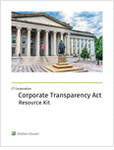The three-letter acronym, ESG (environmental, social, governance), seems to have infiltrated itself into the business agenda of many organizations today. This may partially be due to the growing push by regulators to make ESG reporting a requirement for public companies. ESG reporting is already mandatory for organizations in the UK and EU. The US is following closely behind with net zero targets announced by 2050 and the SEC has proposed climate disclosure reporting for listed companies by 2024. In fact, many organizations are currently anxiously awaiting the SEC to share their new disclosure rules which will require organizations to report on how their operations affect the climate and contribute to carbon emissions. Of course with new legislation, ESG has become a controversial topic with critics questioning the relevance of ESG in a capitalist economy while supporters view ESG as a way to combine financial returns with social good. Needless to say, whether an ally or a foe, ESG has evolved into a dominant topic for business leaders today.
With the growing pressure to implement ESG programs from legislators, investors, and the business ecosystem (e.g media, consumers, stakeholders, customers) some business leaders are finding themselves having to prioritize their ESG efforts and make a business case for ESG. Unfortunately, while ESG may in theory sound promising, organizations taking a proactive stance to benefit society in the long-term by addressing climate change or issues like diversity or racial inequality, the insufficient amount of data to support ESG initiatives is a fundamental problem when formulating a business case. Coupled with the lack of data, there is also the issue of poor uniform reporting standards and metrics hindering evidence for return on investment (ROI). Currently, organizations and investors each define and measure ESG differently and as a result report ESG in different ways. Another complexity of ESG is that it is multi-dimensional and often interrelated with one another. This can become very confusing and difficult for businesses and investors to try and de-code to determine ESG’s ROI and overall benefits – - and costs. This often leads to ESG initiatives being seen exclusively as a cost or compliance obligation rather than a benefit or source of positive ROI for companies. Without global standardization and metrics, developing a business case for ESG is complex and, for some organizations, an insurmountable struggle.









